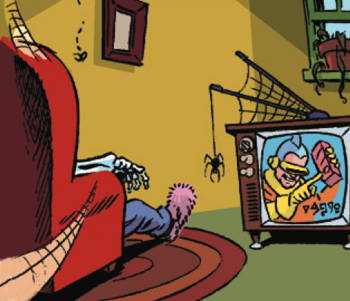April 2022
April 30, 2022
The Rolls-Royce Puzzle Car
Rolls-Royce debuted the Wraith Kryptos in mid-2020. It was a very exclusive car (only 50 of them were made) with a unique gimmick. The car was decorated throughout with an encrypted cipher that, when solved, would reveal a message.To date, I don't believe that anyone has solved the puzzle, even though in December 2020 Rolls-Royce released a clue to help people along.
Of course, only a very few people have access to the puzzle in the first place. Though I imagine that the kind of person wealthy enough to afford the car might also have enough money to hire a cryptographer to solve the puzzle.
Posted By: Alex - Sat Apr 30, 2022 -
Comments (3)
Category: Puzzles, Cars
Coral Castle, Florida
Their homepage.Their Wikipedia entry.
Posted By: Paul - Sat Apr 30, 2022 -
Comments (3)
Category: Architecture, Eccentrics, Regionalism, Statues, Monuments and Memorials, North America, Twentieth Century
April 29, 2022
Usnea, or Skull Moss
Source: Howard W. Haggard, Devils, drugs, and doctors (1929).
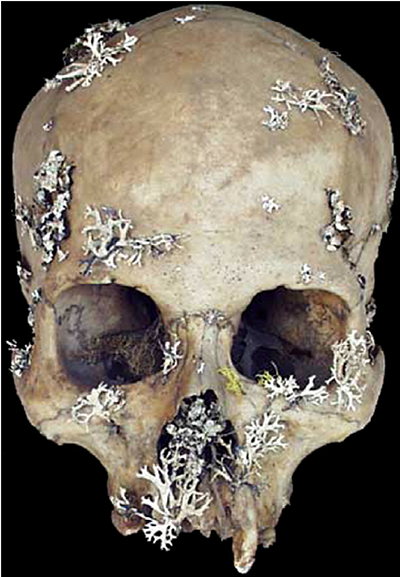
image source: reddit
More info from Frances Larson, Severed: A History of Heads Lost and Heads Found (2014):
There were reports of people growing moss on stones and then spreading it onto the skulls of criminals, as a way of harvesting the tiny green plants for sale. In practice, apothecaries probably used anything that grew on skulls, and some things that did not grow on skulls, to maintain their supplies.
Posted By: Alex - Fri Apr 29, 2022 -
Comments (0)
Category: Death, Medicine, Patent Medicines, Nostrums and Snake Oil, Renaissance Era
Balenciaga Destroyed Crewneck Sweater
Get yours here! Cheap!
Posted By: Paul - Fri Apr 29, 2022 -
Comments (3)
Category: Antisocial Activities, Design and Designers, Excess, Overkill, Hyperbole and Too Much Is Not Enough, Fashion, Frauds, Cons and Scams, More Money Than Brains
April 28, 2022
When your hair stands on end
On August 20, 1975, the McQuilken siblings were hiking in Sequoia National Park when their hair started to stand on end. They paused to take a photo of the unusual phenomenon. The top photo shows the two brothers, Sean and Michael. The bottom one shows their sister Mary.A few minutes after taking these photos, lightning struck Sean and Michael. Luckily, they both survived.
The photos are now used in a pamphlet published by the National Weather Service describing lightning warning signs.
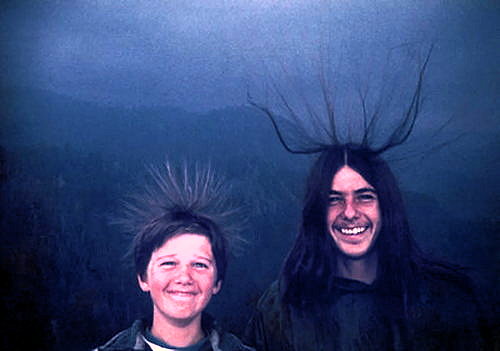

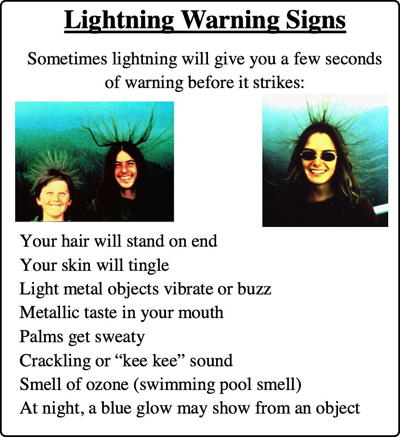
Michael McQuilken later wrote an article about his recollections of that day (the article is now only accessible via the Internet Archive):
More info: NBC News
Posted By: Alex - Thu Apr 28, 2022 -
Comments (4)
Category: Weather
Artwork Khrushchev Probably Would Not Have Liked 43
Somehow, this series of posts has become shockingly relevant!
His Wikipedia page.
Posted By: Paul - Thu Apr 28, 2022 -
Comments (1)
Category: Art, Russia, Twentieth Century
April 27, 2022
Anti-Submarine Seagulls
During World War I the British Navy attempted to train seagulls to reveal the presence of German submarines. The idea was to use a dummy periscope "from which at intervals food would be discharged like sausage-meat from a machine." The birds would, hopefully, learn to associate periscopes with food and would then fly around approaching German submarines, revealing where they were.Initial tests were conducted by Admiral Sir Frederick Inglefield in Poole harbour in Dorset. Inglefield tried to train the birds not only to fly around periscopes, but also to poop on them.
Subsequent tests were briefly conducted in 1917, but then the Navy abandoned the idea.
One private inventor, Thomas Mills, refused to give up on the idea. In 1918 he patented what he called an "apparatus for use in connection with the location of submarines" (Patent GB116,976). It was basically a dummy periscope that disgorged ribbons of food.
Unfortunately for Mills, the development of sonar then made submarine-detecting seagulls unnecessary.
More info: "Avian Anti-Submarine Warfare Proposals In Britain, 1915-18: The Admiralty And Thomas Mills," by David A.H. Wilson in the International Journal of Naval History - Apr 2006, 5(1).
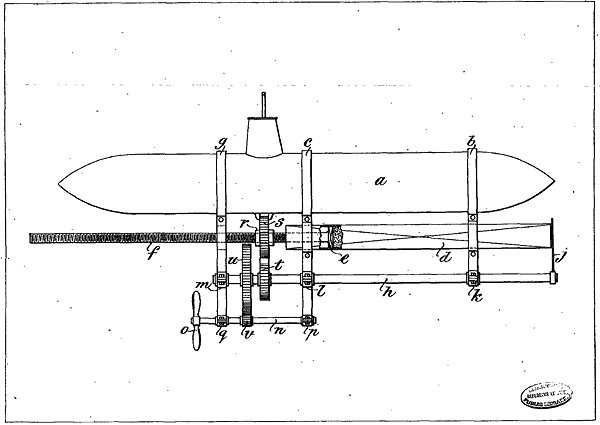
Thomas Mills' seagull-training device
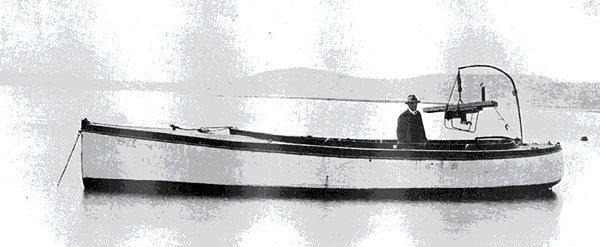
Mills and his invention
Posted By: Alex - Wed Apr 27, 2022 -
Comments (0)
Category: Military, Patents, 1910s
The Humor of Regis Cordic
Wikipedia entry for Regis Cordic.
Posted By: Paul - Wed Apr 27, 2022 -
Comments (0)
Category: Aliens, Humor, Parody, Satire, Inventions, Radio, Advertising, 1950s, 1960s, Alcohol
April 26, 2022
Wolfe v. Feldman
Peter Ackerberg, writing in the Minneapolis Star (Nov 17, 1979), described the unusual legal case of Wolfe v. Feldman, which was heard in 1936:Feldman countered that it wasn't his fault, and he told the judge this story:
Wolfe was strapped to the dentist's chair (apparently a common procedure then), and was given nitrous oxide, an anesthesia better known as laughing gas. What happened next was no laughing matter.
The next part of the story is best summarized in the text of the case itself:
So the patient, while under the influence of laughing gas, managed to grab hold of the dentist's testicles, and in the process of freeing himself the dentist fractured her little finger.
Nevertheless, the judge ruled in favor of the patient for $650, saying:
Posted By: Alex - Tue Apr 26, 2022 -
Comments (0)
Category: Lawsuits, 1930s, Teeth
Death’s Doings
Next time you need cheering up, have a gander at this jolly volume, available at the Internet Archive.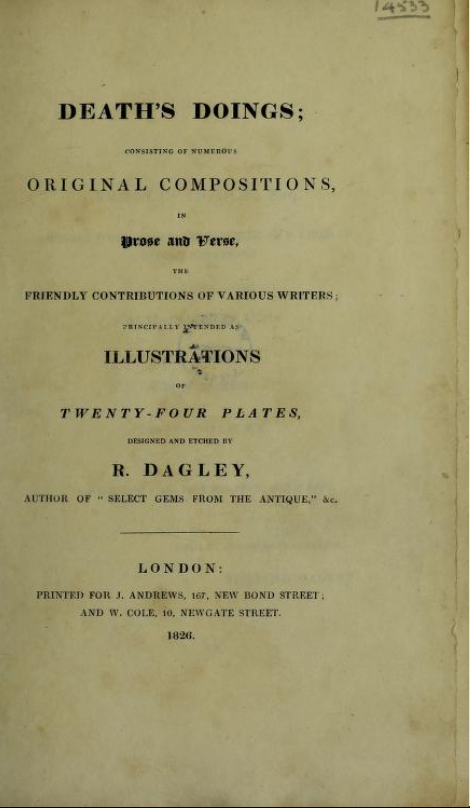
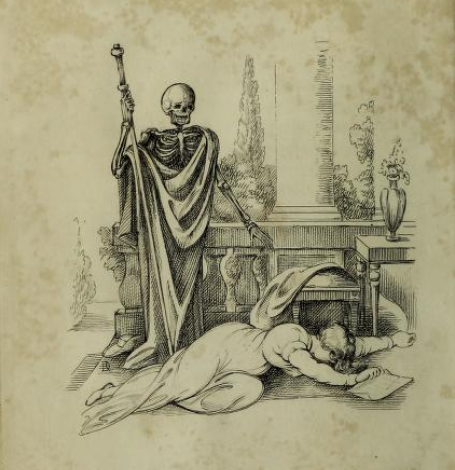
Posted By: Paul - Tue Apr 26, 2022 -
Comments (0)
Category: Death, Books, Nineteenth Century
| Get WU Posts by Email | |
|---|---|

| Who We Are |
|---|
| Alex Boese Alex is the creator and curator of the Museum of Hoaxes. He's also the author of various weird, non-fiction books such as Elephants on Acid. Paul Di Filippo Paul has been paid to put weird ideas into fictional form for over thirty years, in his career as a noted science fiction writer. He has recently begun blogging on many curious topics with three fellow writers at The Inferior 4+1. Chuck Shepherd Chuck is the purveyor of News of the Weird, the syndicated column which for decades has set the gold-standard for reporting on oddities and the bizarre. Our banner was drawn by the legendary underground cartoonist Rick Altergott. Contact Us |
